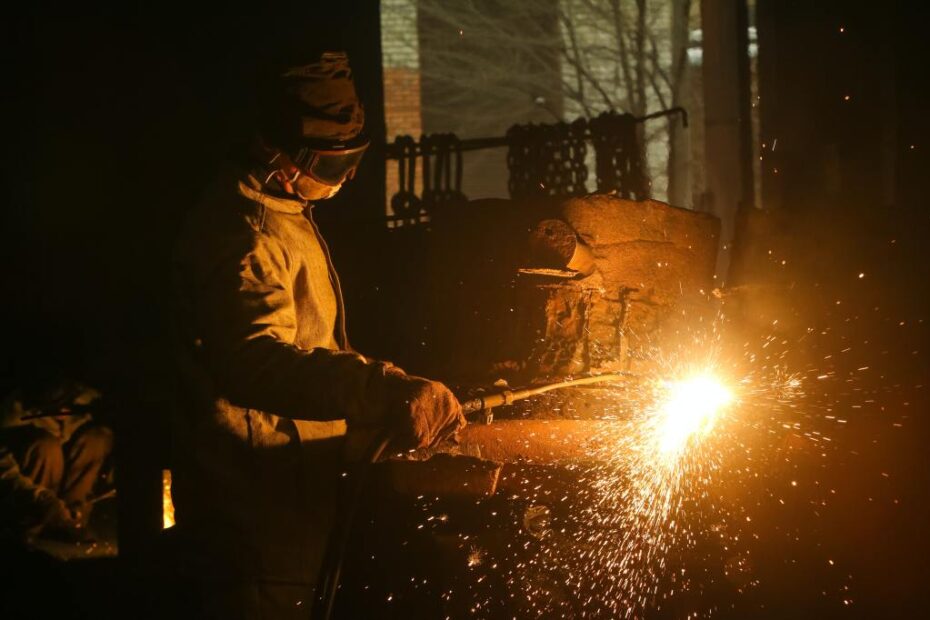What is ‘Mig welding’?
MIG welding is an arc welding technique that employs a continuous solid wire electrode that is heated and fed into the weld pool by a welding gun.
Metal Inert Gas (MIG)
A connection is formed when the two base components are fused together. Along with the electrode, the cannon feeds a shielding gas, which helps protect the weld pool from impurities in the air.
MIG welding was initially patented in the United States in 1949 for the purpose of welding aluminum. Helium gas, which was easily accessible at the time, shielded the arc and weld pool created by a bare wire electrode.
The method, which uses argon as a shielding gas for welding aluminum and CO2 for welding carbon steels, became popular in the United Kingdom in 1952. Metal active gas (MAG) processes involve CO2 and argon-CO2 mixes. MIG is a good alternative to MMA since it has a higher deposition rate and is more productive.
Characteristics of the Process – mig welding
MIG/MAG welding is a versatile technology that may be used on thin sheets as well as substantial sections. A weld pool is formed when an arc is formed between the end of a wire electrode and the workpiece.
The wire acts as a heat source (via the arc at the wire tip) as well as a filler metal in the welding joint. The wire is passed through a copper contact tube (contact tip), which conducts welding current.

Shielding gas is delivered through a nozzle encircling the wire to protect the weld pool from the surrounding atmosphere. The type of shielding gas to use is determined by the material being welded and the application.
A motor drive feeds the wire from a reel, and the welder pushes the welding torch along the joint line. Solid (basic drawn wires) or cored wires are available (composites formed from a metal sheath with a powdered flux or metal filling).
Consumables are often less expensive than those used in other operations. Because the wire is continuously fed, the process is quite productive.
A motor drive feeds the wire from a reel, and the welder pushes the welding torch along the joint line. Solid (basic drawn wires) or cored wires are available (composites formed from a metal sheath with a powdered flux or metal filling).
Consumables are often less expensive than those used in other operations. Because the wire is continuously fed, the process is quite productive.
The wire is normally positively charged and connected to a power source that delivers a steady voltage in this operation. The welding current is determined by the wire diameter (typically between 0.6 and 1.6mm) and wire feed speed, as the wire burn-off rate reaches an equilibrium with the feed speed.


